CHAPTER 10: T IS FOR TOXINS: DETOX YOUR MIND AND BODY
Toxicity is the primary driver of disease.
DR. JOSEPH PIZZORNO, NP, THE TOXIN SOLUTION
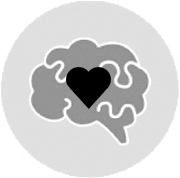
STEVEN
Steven, 32, was a firefighter who suffered from depression, brain fog, and symptoms of post-traumatic stress disorder (PTSD) when he first came to see me. I had already seen his brother for learning issues at school, his father for job-related anxiety, and his stepmother for depression. All of them had mentioned to me their concern for Steven, especially after learning about the connection between brain health and mental health. Firefighters are exposed to environmental toxins, head trauma, and emotional trauma.
Steven initially asked me, “How can I deal with the trauma? I wish I could forget what my eyes have seen, from children being burned to losing whole families in car crashes and fires.” His scan showed signs of PTSD, with his emotional brain working way too hard, plus he also had evidence of toxic exposure, likely from breathing in carbon monoxide and the poisonous chemicals often released by burning furniture. This toxic look is very common among the many firefighters we have seen. Seeing his scan caused Steven to get serious about brain health. Within six months, he felt much better and his brain was healthier.
Steven’s SPECT Scans Before and After Treatment
STEVEN’S SPECT SCANS BEFORE AND AFTER TREATMENT
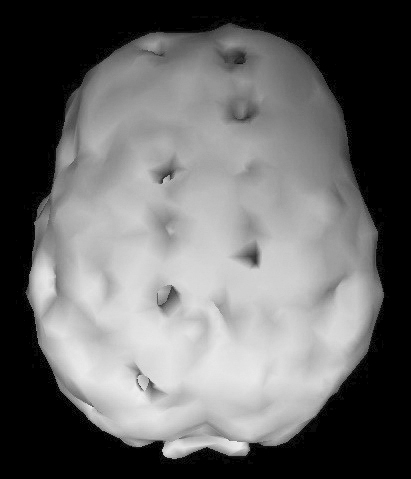
Toxic: overall low blood flow
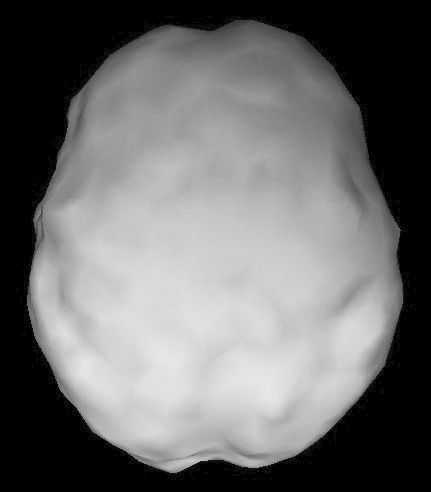
Healthier overall
Steven isn’t alone. The dangerous professions of firefighters, police officers, first responders, and other everyday heroes subject those workers to long-lasting negative impact on their brain function. They are exposed to environmental toxins such as carbon monoxide, benzene, asbestos, and diesel exhaust; head injuries; and emotional trauma. Studies show an elevated risk of PTSD, depression, heavy drinking, and suicide in first responders.[342] Unfortunately, they are less likely to seek help because of the stigma associated with having a mental illness, fearing they will be labeled as weak or unfit for duty. Their professions have convinced them that they are superheroes and nothing could or should get to them.[343]
TOXINS AND THE BRAIN
Your brain is the most metabolically active organ in your body. As such, it is vulnerable to damage from toxins. Toxins are one of the major causes of brain health/mental health issues that traditional psychiatrists almost completely ignore. During my first decade as a psychiatrist I ignored them too. But when I started our work with brain SPECT imaging, I quickly began to see toxic patterns on patients who were not substance abusers. Uh-oh, I thought to myself, there is much more to my patients’ problem than I have considered. I wonder, how many people with toxic exposure have I missed?
Toxins are one of the major causes of brain health/mental health issues that traditional psychiatrists almost completely ignore.
Environmental toxins impact nearly every aspect of your body and can damage the brain, leading to a variety of physical and psychiatric symptoms. On the physical side, issues can include autoimmune diseases, diabetes, cancer, fatigue, numbness, tingling, tremors, allergies, abdominal pain, diarrhea, smelly stools, bad breath, weight issues, skin rashes, sweats, and more. From a psychiatric standpoint, exposure to toxins can increase the risk of depression, suicide, attention deficit disorder/attention deficit hyperactivity disorder (ADD/ADHD), learning problems, memory problems, brain fog, autism, temper outbursts, psychotic behavior, and dementia. Our biological systems get rid of toxins (through the gut, liver, kidneys, and skin), but when those natural detoxification processes are overwhelmed, we can experience brain fog, fatigue, and even life-threatening illnesses. And it can certainly disrupt our mental health.
TEN WAYS TOXINS POISON YOUR BRAIN AND CONTRIBUTE TO MENTAL ILLNESS
- 1. Reduce cerebral blood flow, which on SPECT scans has been associated with depression, bipolar disorder, schizophrenia, ADD/ADHD, and more. As you learned in chapter 5, low blood flow is the number one brain-imaging predictor that a person will develop Alzheimer’s disease.[344]
- 2. Disrupt the endocrine system, interfering with hormone production, causing serious imbalances, and increasing the risk of depression, anxiety, and panic attacks.
- 3. Impair the immune system, increasing your risk of autoimmune disorders and cancer, as well as anxiety, depression, and even psychosis.
- 4. Disrupt the gut microbiome, resulting in leaky gut and accompanying problems, such as mood and anxiety disorders, ADD/ADHD, Parkinson’s, and Alzheimer’s.
- 5. Increase the likelihood of developing diabetes and obesity, since as toxic load rises, so does risk. Toxins are also called diabesogens and obesogens because they contribute to diabetes and obesity, which raise the risk for anxiety, depression, and Alzheimer’s disease.
- 6. Damage DNA, which can accelerate aging of the brain and lead to problems with mood, anxiety, irritability, temper, and irrational behavior, as well as memory.
- 7. Impair enzyme systems, which disrupts many biological processes, such as the ability to produce energy and fight free radicals.
- 8. Harm organs, including the digestive tract, liver, kidneys, and brain. This damage reduces your detoxification system’s ability to do its job, creating an even greater buildup of toxins.
- 9. Alter gene expression, possibly turning on harmful gene variants and/or turning off beneficial ones.
- 10. Damage cell membranes and disrupt communication between cells.
TOXINS
THE EVIL RULER WOULD . . .
- 1. Repeal laws that ensure clean air, clean water, and safe buildings.
- 2. Ignore companies that dump toxic waste.
- 3. Promote chemically laden foods.
- 4. Highlight research that touts the health benefits of alcohol and marijuana.
- 5. Encourage teens to start smoking cannabis, because it has been found to increase the risk of depression and suicide later in life. One study found that using the drug as a teen contributes to mental illness in over 500,000 people in adulthood.[349]
- 6. Disallow labeling of the ingredients in personal care products, so people wouldn’t have to worry about the chemicals they are putting on their bodies.
THE BENEVOLENT RULER WOULD . . .
- 1. Strengthen laws that ensure clean air, clean water, and safe buildings.
- 2. Penalize companies that dump toxic waste.
- 3. Expose the dangers of chemical-laden foods.
- 4. Highlight research that reveals how alcohol and marijuana affect brain health.
- 5. Discourage tweens and teens from smoking cannabis.
- 6. Require truthful labeling of all ingredients in personal care products, so people can make an informed decision about what they are putting on their bodies.
HOW MODERN SOCIETY IS POISONING THE BRAIN AND CONTRIBUTING TO MENTAL ILLNESS
Every single day, we are exposed to a host of chemicals, pesticides, fumes, and products that poison the human brain. Common toxins in the air we breathe, the foods we eat, and the products we rub on our skin are absorbed into our bodies via our lungs, digestive system, and pores and can eventually impact the brain. The more exposure you have to these everyday toxins, the more you are putting your brain at risk and increasing your chances of brain health/mental health issues. Look at the following lists and check how many toxic substances you may have been exposed to, either currently or in the past.
You can’t avoid toxins, but you can limit your exposure and boost your natural ability to detoxify. Detoxifying your world will help you and everyone in your household, including children. My nieces, Alizé and Amelie, don’t need to increase their risk factors. So we do everything we can to clean up our environment.
The more exposure you have to these everyday toxins, the more you are putting your brain at risk and increasing your chances of brain health/mental health issues.
COMMON TOXINS AT THE ROOT OF MENTAL ILLNESS
As a psychiatrist, I have seen many patients with depression, brain fog, anxiety, poor memory and concentration, word confusion, headaches, vertigo, and cravings who all had the same thing in common: exposure to toxins. Here are eight of the most common toxic issues we see at Amen Clinics.
1. Alcohol: not a health food
Some large-scale studies have found that light-to-moderate alcohol use may benefit the heart and brain.[357] But I see alcohol from a different point of view. I worked as an ambulance driver and in emergency rooms where I witnessed the tragedy of lives lost due to drunk driving. As a psychiatrist for nearly 40 years, I have met with many patients whose lives and families have been wrecked by alcohol abuse. And as a brain imaging expert, I have seen thousands of SPECT scans of “moderate” drinkers, whose brains look terrible, and the scans of alcohol abusers that look even worse.
When it comes to the brain, alcohol is not necessarily the health food it’s reported to be. Alcohol can harm your cognitive function and psychological well-being, and alcohol abuse can contribute to mental illness. For example, did you know that people who drink every day have smaller brains?[358] When it comes to the brain, size matters! Heavy alcohol use can alter neurotransmitter and hormonal systems that are involved in mood and anxiety disorders.[359] And did you know that compared to nondrinkers and light drinkers, moderate-to-heavy drinkers increase their risk of dementia by 57 percent —and develop it earlier?[360] Alcohol can also decrease judgment and decision-making skills and increase cravings. And because alcohol lowers blood flow to the cerebellum, an amazing part of the brain that is associated with physical movement, it can make you less coordinated. In the United States, there are 30 million children of alcoholics, and many of them suffer from PTSD as a result of growing up in an unpredictable, abusive alcoholic home. Excessive alcohol use is also a major cause of divorce, incarceration, and financial problems, which can contribute to sadness, anxiety, and despair.
Alcohol is listed as the seventh leading preventable cause of death and is related to seven different types of cancer.[361] Why do nurses rub alcohol on your skin before they give you a shot or insert an IV needle? To kill bacteria. What is the reason alcohol is used to preserve dead specimens? To kill all the cells and tissues in the specimen. This should make you wonder what alcohol is doing to your gut. If you want a better brain, less is more. For people who want to drink and who do not have a history of addiction in their families, I recommend no more than two to four normal-size drinks a week.
Brain SPECT Scan of Heavy Alcohol Use
BRAIN SPECT SCAN OF HEAVY ALCOHOL USE
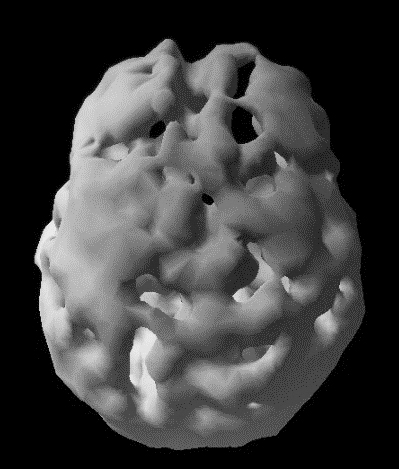
Overall low activity
2. Marijuana: reason for caution
A growing number of states are legalizing marijuana for medical and recreational use, which has boosted the interest in the drug as a potential therapy for physical and mental health issues. Some research suggests it may have some benefit for people dealing with depression, anxiety, and PTSD;[362] however, other studies have found that marijuana can have a negative impact on mental health. In 2016, we published the largest brain imaging study on marijuana users, showing the overall decreased blood flow of 982 users compared to a healthy group.[363] Blood flow was decreased the most in the right hippocampus, which is often involved with Alzheimer’s disease and all types of memory loss. A 2019 review of 11 studies involving more than 23,000 people found that using cannabis as an adolescent increased the risk of developing depression and suicidal thoughts or suicide attempts in young adulthood.[364] Other research shows marijuana impairs short-term memory, contributes to learning and attention problems, reduces focus and coordination, and increases the risk for psychosis. In fact, a 2019 study in The Lancet Psychiatry found that potent cannabis may be associated with 10 percent of new cases of psychosis.[365]
3. Smoking/vaping: more toxic than you thought
Cigarettes are some of the most toxic substances around. According to the American Lung Association, as cigarettes burn they create about 7,000 chemicals, many of which are poisonous.
Here are just 10 of the toxins found in cigarettes:
TOXINS |
ALSO FOUND IN . . . |
Acetic acid |
Hair dye |
Ammonia |
Cleaning products |
Arsenic |
Rat poison |
Benzene |
Rubber cement |
Butane |
Lighter fluid |
Cadmium |
Battery acid |
Formaldehyde |
Embalming fluid |
Methanol |
Rocket fuel |
Tar |
Road materials |
Toluene |
Paint |
It’s common knowledge that the tobacco industry has promoted smoking despite its serious negative health effects. But what you may not know is that it has also promoted the use of its products within psychiatric settings and has funded research suggesting people with schizophrenia can benefit from self-medicating with cigarettes.[366] Today, as many as 80 percent of people with schizophrenia smoke.[367] They aren’t alone. People with brain health/mental health or substance abuse issues are more likely to smoke cigarettes than the general population. In fact, they smoke nearly 40 percent of all cigarettes, according to the CDC.[368]
Although smoking rates have been going down for years, rates of vaping e-cigarettes are on the rise. A 2018 report involving more than 40,000 teens nationwide showed that more than 20 percent of twelfth graders said they had vaped nicotine in the previous month. That’s twice the number who had reported vaping in 2017. And 11 percent of eighth graders admit vaping nicotine in the past year.[369] The rate of young people vaping is rising so rapidly that in 2018, the US surgeon general called e-cigarette vaping among youth an epidemic.[370]
Cigarettes —tobacco and marijuana —as well as vaping nicotine and caffeine delivery systems cause you to inhale into your lungs a host of fine and ultrafine toxic junk that can also penetrate your brain. Does size matter? Yes! The smaller the particle you inhale, the greater its ability to cause inflammatory reactions and damage your brain.
I wanted to see what vaping caffeine does to the brain, so for an episode of The Dr. Oz Show, I scanned Dr. Oz before and after he vaped. The results weren’t pretty. After vaping, his scans showed increased activity in the occipital lobes (the area that makes you notice someone attractive) and decreased activity in the frontal lobes (the area that puts on the brakes to prevent bad behavior). This seems like a prescription for divorce!
4. Mold: a mental illness creator
One of the first lessons I learned from our brain imaging work is that many everyday things are toxic to brain function —and one of the worst is mold. Take it from Bulletproof Coffee CEO Dave Asprey. He had been struggling with focus and memory and was barely able to pass his classes at Wharton. Then, in 2003, after reading my book Change Your Brain, Change Your Life, he got a brain SPECT scan. He says it changed everything in his life. It turned out that Dave had been exposed to toxic mold in his home. His health dramatically improved after following specific healing protocols, and he went on to produce Moldy: The Toxic Mold Movie (watch it online at https://moldymovie.com).[371]
COMMON TOXIC MOLDS
MOLD VARIETY |
DESCRIPTION AND CONSEQUENCE |
Ochratoxin A |
Foodborne mold; causes cancer |
Aflatoxins |
Foodborne mold; causes cancer, can stunt growth in children |
Fumonisins |
Contaminant in maize as well as wheat and other cereals; implicated in neural tube defects and stunted growth[372] |
Zearalenone and other Fusarium mycotoxins |
Crop contaminants; disrupts hormone balance (estrogenic)[373] |
Aspergillus |
Found indoors and outside; especially concerning in children[374] |
Tricothecene, “black mold” |
Crop contaminants that can also grow in damp indoor environments; inhibits protein synthesis; extremely dangerous to skin, kidneys, liver, and more[375] |
Another patient, George, 32, came to see us complaining of anxiety, brain fog, memory problems, and sleep disturbance. From the detailed history we collected, it became clear that George’s symptoms began when he moved back home from college into his parents’ basement apartment. Mold diagnostic testing revealed George had high levels of mold toxins in his body. Only after seeing these lab results did George remember that the basement had flooded on several occasions.[376]
We recommended that George remove himself immediately from the moldy environment, which is the first step for anyone with mold toxicity. Next, we began treatment consisting of binding agents and other medications, such as antifungals, as well as metabolic support supplements. With proper treatment and remediation of the mold problem, George’s symptoms improved. He did not need psychiatric medications; he simply needed an accurate diagnosis and appropriate treatment. If no one had checked him for mold toxins, he probably would have been diagnosed with one or more mental illnesses and treated (unsuccessfully) with psychiatric medications. He could have gone years with worsening symptoms.
5. Lead: a clear and present danger
Lead harms the brain, and lead exposure is associated with lower IQ, speech problems, cancer, cardiovascular problems, arthritis, seizures, headaches, anemia, kidney disease, a metallic taste, and death from all causes. Lead exposure is also related to a variety of mental health issues. In children, it has been associated with ADD/ADHD,[377] learning problems, irritability, aggression, fearfulness, anti-social behavior, and more.[378] It has also been linked to adult-onset schizophrenia.[379] In a 2010 study with nearly 2,000 young adults with low levels of lead exposure, higher blood levels of lead was associated with an increased risk of depression and panic disorder. The researchers concluded that even at levels generally considered safe, lead exposure could negatively affect mental health.[380]
The US government used to report that a “safe” level of lead in the bloodstream was less than 60 μg/dL (micrograms per deciliter). The current “safe” level is under 10 μg/dL, and in July 2012, the CDC reported that the range of 5.0–10.0 μg/dL is highly risky for children. Many scientists say that any level of lead is unsafe. Depending on your age, you may recall that the government dictated that lead be removed from gasoline and paint. Strangely, this didn’t apply to small aircraft aviation fuel. At the Amen Clinics, we scanned 100 pilots and saw significant brain toxicity in two-thirds of them. We suspected it was caused by lead and other toxins that they are exposed to when they fly. In regard to paint, any house painted white before 1978 has high levels of lead, and once it chips or peels, it exposes those in the home to lead. And houses built or remodeled before 1984 likely have lead in the pipe solder.
One of the most widely used cosmetics —lipstick —still contains lead since no regulation has required that lead be removed from it. Lead was found in 60 percent of national brands.[381] In 2013, researchers at the University of California, Berkeley, found lead in 24 of 32 lip products tested. Many of the products contained high levels of eight other metals, including cadmium and chromium.[382]
To avoid buying and ingesting lead-contaminated lip products, know your lipstick brands and go to www.safecosmetics.org to learn more.
6. General anesthesia: the risk surgeons don’t warn you about[383]
I first became aware of the potentially toxic risk of general anesthesia[384] when one of my patients called me in tears after having knee surgery. She told me she felt as if she had brain fog and was afraid she was developing Alzheimer’s disease. I had already done a SPECT scan on her, so I rescanned her to see if her brain had changed. On the new scan, her brain looked toxic. Her frontal and temporal lobes, which are both involved in memory and attention, looked dramatically worse. Something had negatively affected her brain after that first scan. With the BRIGHT MINDS approach in this book, she was able to clear the brain fog and regain her memory.
Some scientific studies show no lasting negative effects and others show toxic effects from general anesthesia, but two recent studies are notable. In one, children who had undergone general anesthesia before the age of four had lower IQ, diminished language comprehension, and decreased gray matter in the back of their brains.[385] Also, a before-and-after SPECT study of patients who underwent coronary artery bypass surgery showed that 68 percent had diminished blood flow, which was linked to decreased verbal and visual memory six months later.[386] As you’ve seen in this book, low blood flow is one of the BRIGHT MINDS risk factors that can contribute to mental illness. If you have to undergo surgery, I recommend local or spinal anesthesia whenever possible. If that is not an option, make sure you do everything you can to optimize your brain before going under the knife.
If you have to undergo surgery, I recommend local or spinal anesthesia whenever possible. If that is not an option, make sure you do everything you can to optimize your brain before going under the knife.
One of my treasured assistants, Karen, who is beloved by our patients, discovered she had an aortic aneurysm. We had a prior SPECT scan, one shortly after her aneurysm surgery, and then one after she worked hard to rehabilitate her brain. No doubt, the surgery had a very negative impact on her brain and mind, but that was recoverable with the right BRIGHT MINDS program.
Karen’s SPECT Scans Before, After Aortic Aneurysm Surgery, After BRIGHT MINDS
KAREN’S SPECT SCANS BEFORE, AFTER AORTIC ANEURYSM SURGERY, AFTER BRIGHT MINDS
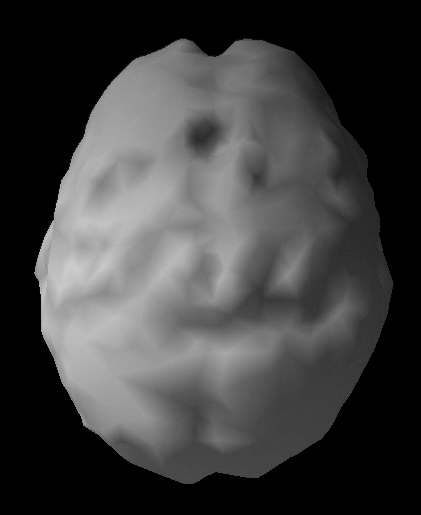
Before
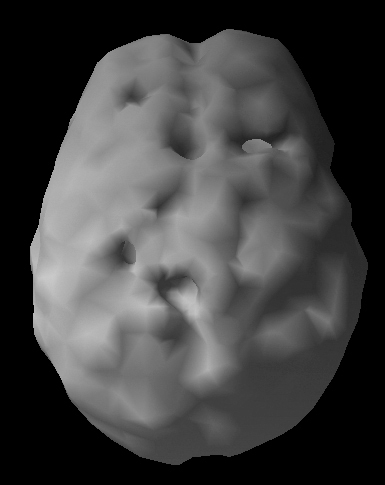
Overall lower blood flow after surgery
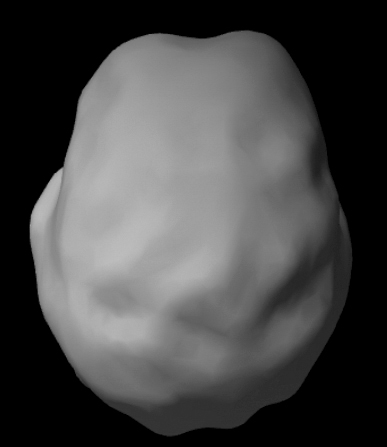
After rehabilitation
7. Chemotherapy and heavy metals: stealing your mind
At Amen Clinics, we see many patients who have treated cancer with chemotherapy. Chemotherapy kills cancer cells, but it unfortunately can kill healthy brain cells too.[387] High exposure to heavy metals (e.g., arsenic, mercury, iron, and aluminum) can also lead to memory problems. I recommend asking your physician to screen you for heavy metals, especially if you know you’ve been exposed to any.
8. Personal care products: the ugly side of health and beauty aids
How many personal care and cosmetic products do you use each day? If you’re like the average American woman, you apply about 12 products, or like the average man, about six.[388] According to Statista, the cosmetics, perfume, and other toilet preparations industry is expected to spend close to $19 billion on advertising in 2019 to encourage us to use more of these everyday items.[389] But the chemicals in these products are easily absorbed through your pores and can be transported to every organ in your body, including your brain. This means while trying to look better on the outside, you could be poisoning yourself on the inside and increasing your risk for brain health/mental health issues. The risk from these items is real. In 2016, Johnson & Johnson was ordered to pay $72 million to the family of a woman whose death from ovarian cancer was associated with the daily use of Johnson’s Baby Powder among other company products.[390]
If you have symptoms associated with brain health/mental health issues, I highly recommend that you ditch personal care products with harmful ingredients to lighten your toxic load. The Environmental Working Group’s Skin Deep database (http://www.ewg.org/skindeep/) can help. It offers information on many products with toxic ingredients and suggests healthier alternatives. The following chart lists chemicals commonly found in personal care products —along with a brief description of the damage they can do, and is from The Toxin Solution, an exceptional book by Joseph Pizzorno, ND, a founder of Bastyr University.
What goes on your body goes in your body.
COMMON CHEMICALS FOUND IN HEALTH AND BEAUTY AIDS
CHEMICAL |
PURPOSE |
TOXICITY |
Acrylates |
Artificial nails |
Neurotoxins[391] |
Aluminum |
Antiperspirant |
Potential connection to Alzheimer’s disease[392] |
Formaldehyde |
Shampoos, nail polish, hair gel, nail and eyelash glue, body wash, color cosmetics |
|
Fragrance |
Shampoos, liquid baby soap, nail polish, glues, hair smoothing, body wash, color cosmetics |
Cancer, endocrine disruption, allergic reactions |
Oxybenzone |
Sunscreen |
Hormone disruption, lowers sperm count, skin allergies |
Parabens |
Preservative, fragrance in cosmetics (eye shadow, foundation, mascara), shampoos, conditioners, lotions, facial/body cleansers |
Hormone issues, breast cancer,[395] developmental problems in kids, reproductive problems, allergies |
Phthalates (banned in Europe) |
Fragrances in cosmetics Also used in plasticizers (plastic wrap, packaging) |
Hormone disruption;[396] lower IQ;[397] decreases BDNF in males,[398] which helps neurons grow and connect |
Polyethylene glycols (PEGs) |
Create suds in shampoos, bubble baths, liquid soap |
|
Triclosan |
Antimicrobial cleanser, toothpaste |
|
Lead |
Lipstick (kiss of death) |
Neurotoxin, damage to hippocampus and prefrontal cortex[403] |
Source: Dr. Joseph Pizzorno, ND, The Toxin Solution. Used with permission. |
||
9. Household items: when home sweet home becomes “home toxic home”
Many of the common items in your home may harbor potentially harmful chemicals, and tackling DIY home projects can increase your exposure to toxic substances. For example, carpeting, flame-retardant bedding and furniture, flooring, and paints can have high concentrations of chemicals. In 2019, researchers from Duke University presented evidence showing that children who grow up in homes with a flame-retardant sofa had six times more polybrominated diphenyl ethers (PBDEs) in their blood serum.[404] These chemicals have been associated with neurodevelopmental delays, interference with the endocrine system, thyroid disruption, obesity, cancer, and other conditions.
Disturbing Fact: One of the most effective ways for a woman to decrease her toxic load is through breastfeeding, which decreases breast cancer risk.[405] Unfortunately, the baby gets the brunt of it.
 CHECKUP FOR TOXIN ISSUES
CHECKUP FOR TOXIN ISSUES
Your detoxification organs include your gut, liver, kidneys, and skin. To operate as intended, they must be healthy. Your liver, for instance, filters blood to identify and hold toxins. Its enzyme systems break them down, and the liver produces bile to excrete them. Your liver has finite toxin-processing capacity, which means it is highly vulnerable to toxic overload.
Your kidneys filter all your blood 60 times per day. Because kidney function decreases with age —about 50 percent from age 20 to 85 —your support is critical.[408]
Chapter 7 offers ways to check up on your gut. For the other organs, keep reading.
Note: If you have limited resources, skip the expensive lab tests and spend your money on high-quality, detoxifying food.
Lab tests
LIVER FUNCTION
- ALT (SGPT) —normal range: 7–56 units per liter (U/L)
- AST (SGOT) —normal range: 5–40 U/L
- Bilirubin —normal range: 0.2–1.2 mg/dL
- Zinc —normal range: 60–110 mcg/dL (low zinc will limit detoxification in the liver)
If liver function tests are high, check for excessive sugar and simple carbohydrate intake, alcohol use/abuse, hepatitis or medications that raise liver enzymes, such as acetaminophen (Tylenol).
KIDNEY FUNCTION
- BUN —normal range: 7–20 mg/dL
- Creatinine —normal range: 0.5–1.2 mg/dL
SKIN
- Check for rashes, acne, and rosacea —may be signs of detoxification problems
If mold is suspected
- TGF Beta-1 —This blood test measures a protein found throughout the body that plays a role in immune system function and is often high in mold exposure (also called mycotoxin exposure). It can also be raised because of certain infections, such as Lyme disease. The normal level is below 2,380; 0 is optimal. Mold exposure can raise this to greater than 15,000.
- Real Time Labs mycotoxin test (http://www.realtimelab.com/home)
If heavy metals are suspected
- Hair sample and urinary “challenge” tests are common —for these urine tests, a chelating agent is administered prior to collecting the specimen
PRESCRIPTIONS FOR REDUCING YOUR TOXINS RISK FACTORS
(AND THE FOUR CIRCLES THEY REPRESENT)
The Strategies
You can reduce your toxic load with three simple strategies:
BRIGHT MINDS: TOXINS
STEPS TO CREATE MENTAL ILLNESS . . . AND MAKE MY NIECES, ALIZÉ AND AMELIE, SUFFER
- 1. Don’t care about your detoxification organs.
- 2. Engage in habits that increase your exposure to toxins.
- Smoke cigarettes, use marijuana, and drink excessive amounts of alcohol.
- Eat pesticide-laden foods.
- Consume processed foods with chemicals, additives, and preservatives.
- Eat meat and dairy treated with hormones and antibiotics.
- Eat fish containing PCBs.
- Use plastic food containers and reheat food in them.
- Don’t bother thinking about how much water you drink.
- Expose yourself to mold.
- Routinely light a fire in the fireplace at home.
- Don’t change the filters of your heating and cooling systems.
- Use cleaning products and personal care products with chemicals and fragrances.
- 3. Avoid the strategies that strengthen your detoxification systems.
STEPS TO END MENTAL ILLNESS . . . AND KEEP MY NIECES, ALIZÉ AND AMELIE, HEALTHY
- 1. Care about your detoxification organs.
- 2. Avoid toxins as much as possible.
- 3. Engage in habits to strengthen your detoxification systems.
- Quit smoking, stop using marijuana, and limit alcohol to two to four glasses a week.
- Remove “silver” dental fillings.
- Reduce your consumption of toxin-contaminated foods.
- Choose organic foods when possible.
- Always wash your fruits and vegetables.
- Avoid processed foods and those with chemical ingredients.
- Choose meat and dairy that is antibiotic and hormone-free.
- Drink three to four quarts of clean water a day.
- Check your home for mold and eliminate it.
- Do a bathroom cleanse to eliminate unsafe cleaning and personal care products.
- Support your gut (see chapter 7, “I is for Inflammation”).
- Exercise to work up a sweat and detoxify your skin.
- Consider nutraceuticals to support your liver, kidneys, and skin.
Pick One BRIGHT MINDS Toxins Tiny Habit to Start Today
- When I go grocery shopping, I will buy organic whenever possible.
- When pumping gas, I will not stand at the pump and breathe in any fumes.
- When I visit friends and family, I will avoid secondhand smoke.
- When I drink alcohol, I will limit my intake to no more than two to four glasses a week.
- When I take my supplements, I will include N-acetyl-cysteine (NAC).
- When I make meals, I will include brassicas for their detoxifying ability.
- When I go shopping, I will avoid handling cash register receipts (the BPA in their plastic coating can get through your skin).
- When I drink, I won’t use plastic straws.
- When I go to the store, I will not buy anything with MSG, artificial dyes, or preservatives.
- When I am about to buy or use a cleaning or personal care product, I will scan it first on an app like Think Dirty or Healthy Living (ewg.org) and will not use any that contain toxins.


